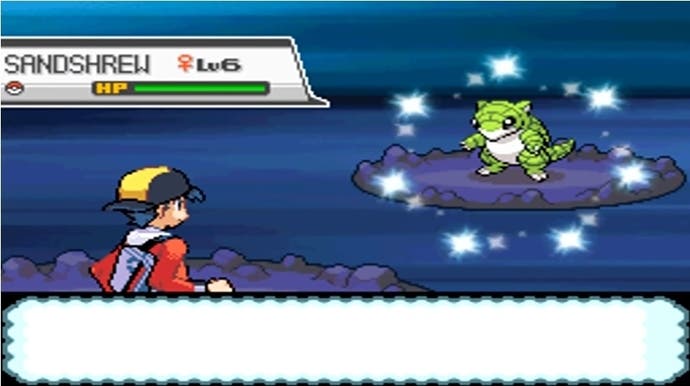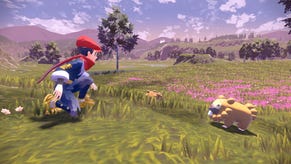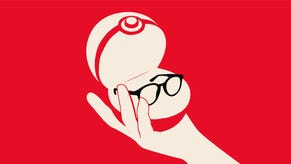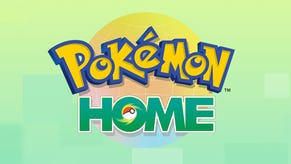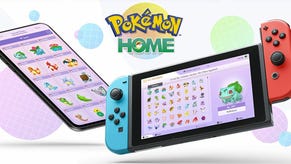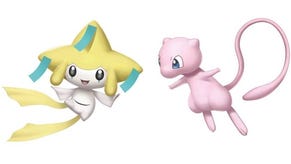How a visually impaired streamer hunts shiny Pok¨Śmon
The good fight.
Shiny hunting is a task only the most dedicated Pokémon players dare undertake. Shiny Pokémon are an incredibly rare phenomenon, identical to their regular counterparts in all but colour. In pre-internet times, they were nothing more than a playground myth, but nowadays self-confessed "shiny hunters" spend hundreds of hours hatching eggs to the extent they even have representation in the anime.
As with all things, many dedicated players livestream their hunts to legions of avid fans. Tony Olabode, better known on Twitch and YouTube as Saiyan4414, is one such streamer. He mostly hunts legendary Pokémon, which involves resetting the game after encountering the Pokémon for hours on end, because each time there is a 1/4000 chance for it to be shiny. It's a test of patience for any player, but for Tony, it's also a test of skill. Tony is partially sighted, so while he can see some shapes, he struggles to read the game's text and make out colours - especially when a shiny Pokémon doesn't look that different from its regular counterpart.
So, he shiny hunts by sound. When a shiny Pokémon appears, it sparkles and glows. However, most players won't notice that these sparkles also let out a unique noise. That's what Tony is listening for, and that's how he knows if he's found a shiny Pokémon or not.
"I've played Pokemon since Red and Blue," he tells Eurogamer. "But I still remember the first official shiny I got on my friend's Crystal version.
"I'd been playing it one day, and I went into Mt Mortar and I randomly came across a shiny Graveller. I didn't know it was a shiny Graveller [at the time], I heard the sparkling sound before it and I think I ran from it. I went back later to try to find it and I'm just like, 'I think that was rare because I don't see it anymore.' "
Shiny Pokémon have a 1/8192 chance of appearing in Pokémon Crystal, and sparkle when they appear in battle. These are the sparkles Olabode heard, and although he didn't know it at the time, lit the fuse on his love of shiny Pokémon.
It wasn't until years later that Olabode decided to actively search for shiny Pokémon and to stream his hunts on Twitch, only knowing if he had encountered a shiny by the brief sparkling sound it emits when it appears. By 2015, content creation had become a part of how we consume gaming, and thanks to that - and the larger internet as a whole - players knew for sure that shiny Pokémon existed. The mythos and mystery was gone, but the insatiable appetite to catch 'em all - or watch someone else try to - had grown exponentially.
"I don't think there are any [other] blind streamers that stream Pokémon," Olabode explains. "I want to show people that, 'Hey, I'm blind or visually impaired, but I can do this - blind people can do this!' "
Olabode points out that most visually impaired streamers and the majority of visually impaired gamers he knows play fighting games because they are most accessible. The precise sound design of fighting games makes them easily accessible to partially sighted players. From the unique noise each move makes to the various grunts fighters emit that give away their position, every sound helps visually impaired players build a mental picture of what's going on. There is even a precedent of blind players being very successful at fighting games, from TJ the Blind Gamer creating video content to a blind teen named Brice Mellen beating Mortal Kombat creator Ed Boon at his own game in 2005. In 2016, Eurogamer reported on Sightless Kombat, a completely blind gamer who hit the "Killer" rank in Killer Instinct.
But Olabode has always loved Pokémon so he continues to play, despite the difficulties. He remembers the irony when he and his friends were playing through Pokémon Ruby and Sapphire in high school. He helped his friends solve a series of Braille puzzles in order to access to mythical Regi Pokémon. It wasn't touch Braille, just a series of dots on the screen, but Olabode's friends transcribed the letters onto paper and he translated from there. However, this left him feeling more exasperated than excited.
18 years later, things are far from ideal. Olabode explains that PlayStation and Xbox consoles have system-level text-to-speech systems that translate what is shown on screen to audio. The systems aren't perfect - images are more difficult to convert than on-screen text - but games are immensely easier to play if menus, tutorials, and other on-screen text is read aloud.
The Nintendo Switch, however, does not have a system-level screen reader, narrator or text-to-speech. "They understand there are blind people because they put Braille on the screen in the games - what's wrong here?" Olabode asks. "It shows they know blind people exist, so reach out to blind people, say, 'hey, what would you guys like us to implement in our games, or what can we do to make these accessible for you?' "
Recent updates to the Switch added button remapping, a huge step towards helping players with physical disabilities being able to play more games. A zoom feature was also added, which undoubtedly benefits visually impaired players.
In a statement to Motherboard in 2019, a spokesperson from Nintendo said: "Nintendo endeavours to provide products and services that can be enjoyed by everyone. Our products offer a range of accessibility features, such as motion controls, a zoom feature, haptic and audio feedback, and other innovative gameplay options. In addition, Nintendo's software and hardware developers continue to evaluate different technologies to expand this accessibility in current and future products."
The zoom feature is a step in the right direction, as is haptic feedback, which uses vibrations to simulate touching something, similar to how mobile phones vibrate a little bit when you unlock them to simulate a button click. However, it's difficult to see how the latter has been implemented as an accessibility feature - in Pokémon Sword and Shield, the majority of vibrations occur when you enter a Dynamax Raid and the Switch simulates a small earthquake in your hands.
Accessibility charity Able Gamers agrees, saying in their Nintendo Switch review that "it is disappointing to say the least to see Nintendo ignoring accessibility so completely". It's worth noting this review was published before the zoom and haptic feedback features were added to the Switch.
Nintendo is clearly thinking about accessibility measures for their consoles, but it still seems like vital accessibility software such as text-to-speech is missing, which is why Olabode can't justify forking out $300 for a new console, even if it could improve his streams.
"With these new games coming out, I'm still playing the older gamem" says Olabode. "It's hindering me from going to the next level. It does frustrate me sometimes... When Let's Go dropped, I didn't have a Switch yet. But I was seeing all this stuff [work from other content creators], and I thought, 'so everybody else can do this, and I can't because of accessibility' and that's not completely fair."
Olabode does what he can, and as disabled people have been forced to do in every path of life, he's adapted and overcome. But he shouldn't have to. It's clear more needs to be done to make the Switch fully accessible.
For example, Olabode uses screen reading software to read his Twitch chat while streaming, but sometimes the barriers he faces are less technological and more personal.
"A lot of people are like, 'why does a shiny matter? You can't see it,' " Olabode says. "One, I like the aspect of hearing the difference, like the sparkly sound before. And two, I love making the videos and uploading the videos to YouTube because then I can go and look back on them. Like, I have a reaction to a Ho-oh that I got, which got to the point where I had one turn before it died, so I got really lucky.
"Some people will be like, 'oh, well just go play something else' or whatever. Just because I'm blind doesn't mean I don't like playing video games."
That's not to say there aren't accessible games; fan-made AudioQuake brings the FPS genre to visually impaired gamers, and companies such as VGStorm and GMA Games specialise in sound-only games.
VGStorm's game Manamon is a particularly interesting example, as the RPG borrows heavily from Pokémon, the biggest difference being that players navigate through the game purely based on noises and sounds. It's impressive to listen to someone play, but sound-based games aren't widely popular.
Visually impaired people want to be able to play games, but they shouldn't be limited to tailor-made titles made by specialist companies. They want to play the latest AAA blockbuster, the game everyone is tweeting about and their friends are playing online, and in some cases, they want to play Pokémon Sword and Shield.
Even the simple addition of a screen reader could allow millions more people to play Pokémon and many other games, but it doesn't seem to play a part in Nintendo's plans. The company did not respond to our questions about implementing the feature or other accessibility options for visually impaired players.
Until mainstream games are more accessible, visually impaired gamers will improvise, hurdle obstacles, and do what they always have - they will overcome.
And Tony Olabode is no different. "If something didn't work for someone who was sighted," he says, "they wouldn't just let it go. No, they would fight for it. That's what I'm trying to do."
